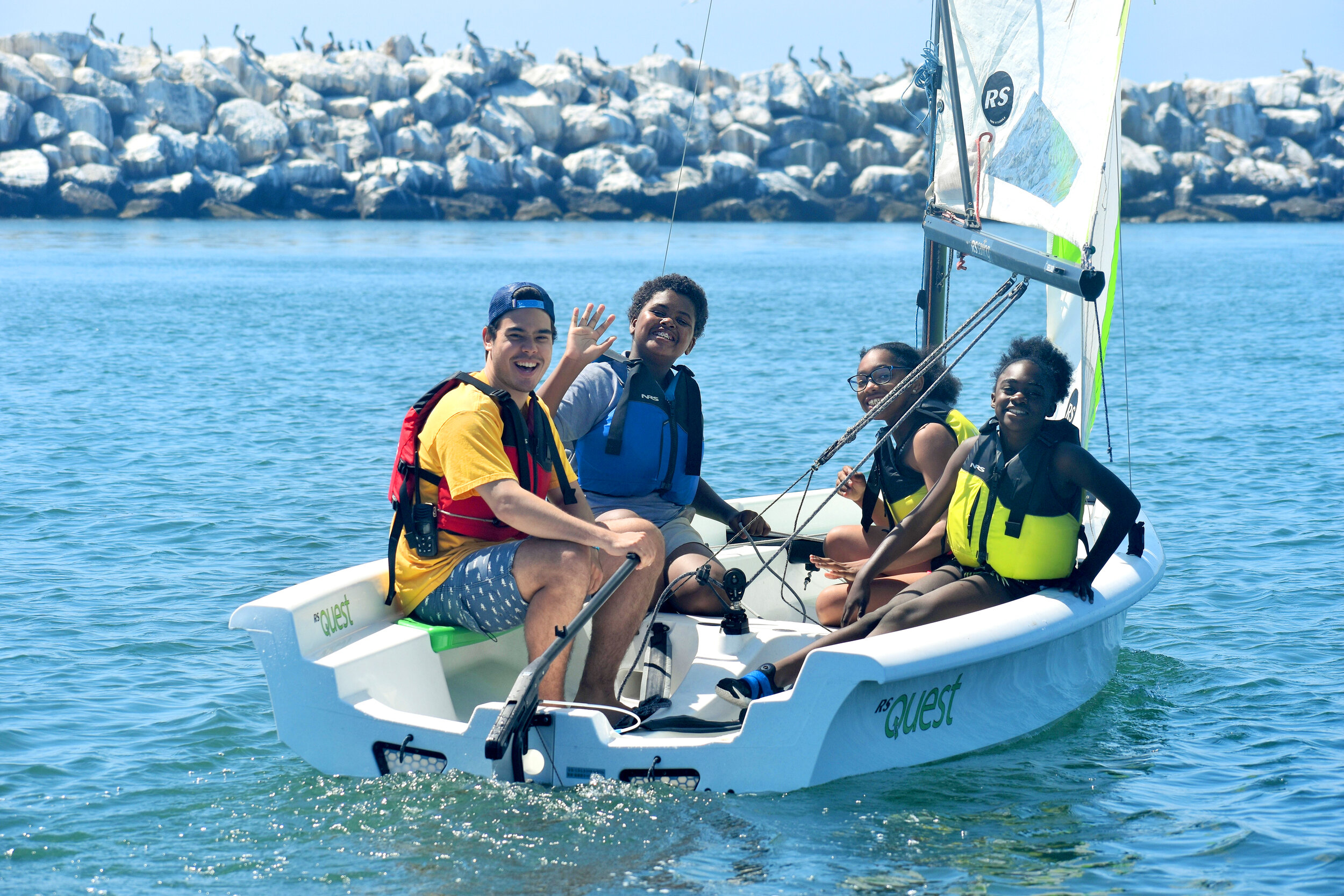The Challenge:
Schools Can't Do It All
Play 5
Develop Community Partnerships
It’s hard for schools today to be able to provide all the sport and fitness activities that students may seek. Awareness and interest in less mainstream sports has grown with the internet. On-site recreation spaces are limited, especially in charter schools, many of which move into small buildings that lack athletic facilities on campus. PE is rarely taken after ninth grade in public schools and even less often in private schools.²⁹ Students with intellectual, physical and other disabilities often rely on partnerships with non-school organizations to play sports.³⁰
The smart move is to lean into community partnerships, in all forms. Schools should abide by all Title IX and other legal requirements tied to the provision of sport and physical activities (see Call For Leadership section), but also recognize that outside organizations often have expertise, equipment, cultural competencies, facilities, and human capacities that school staff may lack.
These entities often have great motivation to collaborate. Community-Based Organizations+ such as the YMCA, Special Olympics, Parasports programs, and Boys & Girls Clubs need to serve their local area to remain viable. Nonprofits like Soccer Without Borders must secure grants to host games and tutoring programs, which requires they work with schools to engage recent immigrants often left out of school sports due to cost or language barriers. The past decade has seen the emergence of groups that donate used equipment. National Governing Bodies of sports always look to recruit new participants. Expensive private clubs are increasingly motivated to close access gaps through scholarships.
Shared-use agreements for facilities space remain an underutilized resource. Most fields and gyms in communities are owned by municipalities and schools. When doors are thrown open to each other for related programs, efficiencies and even higher program quality can emerge. By using the power they have to issue facility permits, parks and recreation departments and schools can set the conditions under which these public spaces are used, driving equity and safety objectives.
Creativity and persistence are the traits needed to secure partnerships. The winner of our Charter Schools category, ICEF View Park in south central Los Angeles, underscored as much when we asked how school leaders brought rugby, sailing, surfing, and snowboarding to students at their school, which must host almost every activity off-site. Look everywhere for opportunity and don’t take no for an answer, they said.
WHO CAN HELP
Policymakers
Shared use agreements+ for fields and facilities can reduce race- and income-based health disparities by increasing access to safe, affordable opportunities for physical activity. It’s especially helpful in under-resourced neighborhoods where a lack of funding might prevent development of new recreational spaces. These agreements can occur informally (based on historical practice) or formally (written legal document). ChangeLab Solutions has the Shared Use Playbook with helpful tools and resources to formalize these agreements.
Sports Organizations
Often, sports programs for students with disabilities are one-time opportunities to play or segregated activities that can be seen as patronizing. Schools can work with organizations that have a track record of providing a more sustained or integrated experience, such as Special Olympics (Unified), American Association of Adapted Sports Programs, Move United, and Challenged Athletes Foundation.
Local School Districts
The Centers for Disease Control and Prevention recommends that schools create a Comprehensive School Physical Activity Program (CSPAP).+ The CSPAP should include descriptions of coordination and synergy around quality PE, other forms of physical activity before, during and after school, and family and community involvement. CDC and SHAPE America created step-by-step guidance to develop, implement and evaluate their CSPAP. The American Heart Association created state and district model policies for CSPAPs.
Business & Industry
Create hybrid PE models that include relevant homework or outside assignments. Since students want more fitness opportunities, they could receive PE credit through a fitness club membership as a club staffer attests that the student followed a curriculum. Create a school partnership with free or discount student access to the club – not unlike how schools use community pools for teams and PE. Or invite a fitness instructor to offer a service after school. Schools’ role with student wellness should not be confined to the school day.
Philanthropy
Invest in the training and shareable resources for afterschool fitness activities. A good example is BOKS, a free, physical activity program designed to get kids active. BOKS provides the lesson plans, training and support for free to schools. Other funders could make similar investments.
FINDING SUCCESS
A school of 4,100 students, Alexandria City High School in Virginia often has 300 students try out for 45 soccer spots. Players get cut with nowhere to play. So, the school partnered with the Alexandria Soccer Association (ASA) for students to play recreationally for free, and in exchange, ASA uses the school fields. Students can play ASA before school tryouts as a “feeder” team for the school. The hope is this reduces the chances students feel slighted and quit soccer if they get cut by Alexandria City.
The term means a public or private nonprofit organization of demonstrated effectiveness that is representative of a community, or a significant segment of a community, and provides educational or related services to individuals in the community.³¹
Source: How Community-Based Organizations Can Support in Reimagining School Sports, Aspen Institute Project Play
DIVE DEEPER
Innovative partnership helps Jefferson High School soccer team combat cycle of poverty, Aspen Institute/USA Today
Science Leadership Academy: Practice in mornings to grow access, Aspen Institute










